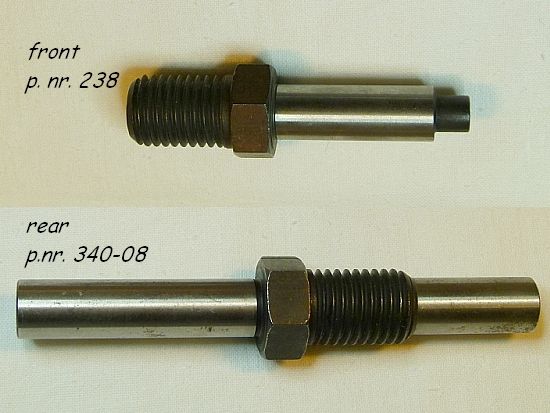You’re welcome!
Thank you for detailed questions and interest in my 3.0 theories ![]()
Maybe we should start a new thread with your specific problem…and some pics?
Gladly l’ll try to; please let me first quote myself: Don’t even think of skipping this tube…
(from here: Rear wheel bearings for Strida?) and then start right from the beginning, referring to the parts drawing of the Strida 3 and the old part numbers.
-
Note: The small washer 376 (between magnet and bearing) does have a crucial function.
By creating a distance (= the washers thickness) it prevents the magnet of touching the outer bearing ring.
The outer diameter of this washer has to be equal or smaller than that of the inner bearing ring.
(The magnet must not get in touch with neither hub nor outer bearing ring or bearing cover.) -
Note also: Once you tighten the wheel bolt 375 you’ll create a force in the bolt’s thread and another one in the opposite direction.
This force in turn will produce pressure to the washers 165 and 376, the magnet 236, again washer 376 and finally - directly to the inner ring of the first bearing!
And the travel of the pressure force should not be over at this point, usually it would be transferred along through the 237 (or 337 at the rear wheel) spacer and then the inner ring of the second bearing.
Finally you will find a special area of the axle, close to the hex nut.
This area is the counterpart for the second inner bearing ring, it’s diameter is smaller (or equal) than that of the inner bearing ring.
I really hope you can see the fine, round line between the axle stump and the nut, close to the hex shape and vice-versa the thread:
just a few tenth’s of a mm - that’s it!

Skipping the spacer would mean to create very high axial stress to the radial bearing - it would die very soon!
Not really fixed, usually it’s just more or less clamped between the two inner bearing rings.
Had also original wheels where it was slightly moving inside the hub.
No, inner diameter of spacer is slightly bigger than the axle d., spacer’s outer diameter similar to inner bearing ring.
Even more confused or better now? ![]()